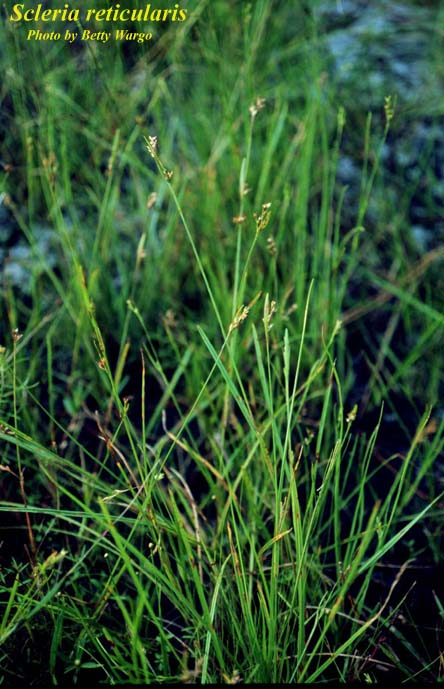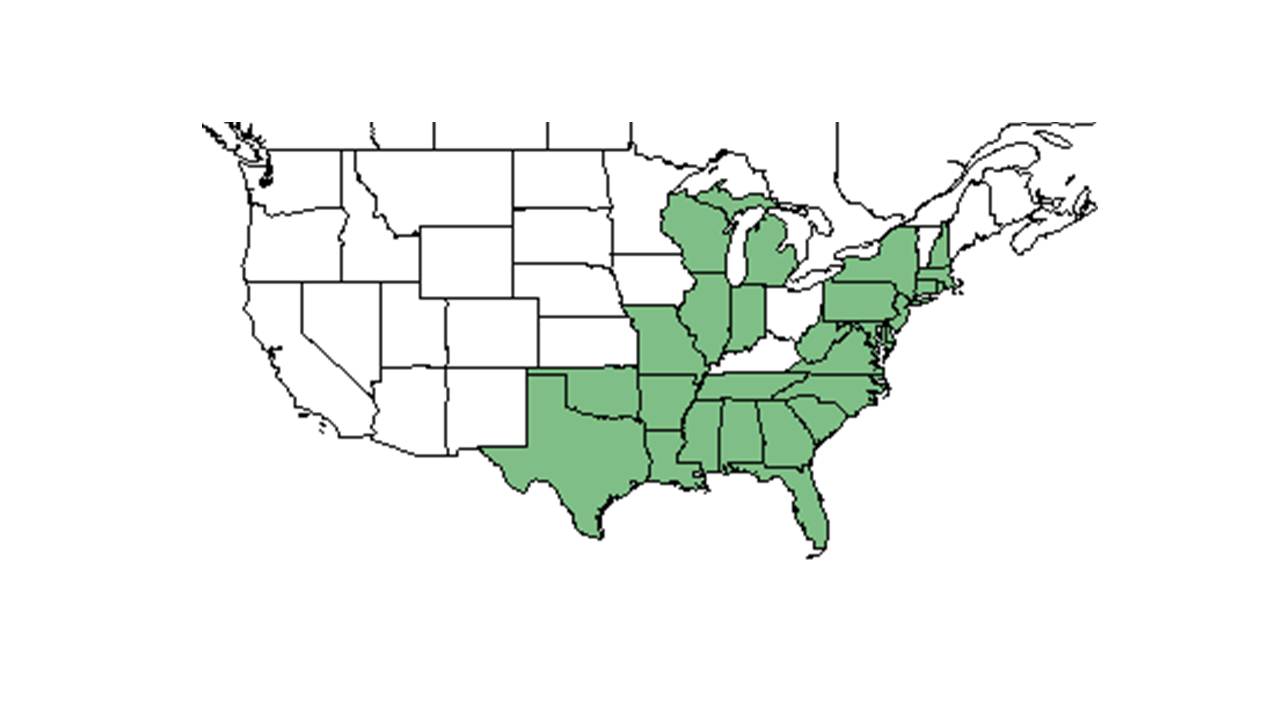Difference between revisions of "Scleria reticularis"
Rwagner914 (talk | contribs) (→Seed bank and germination) |
Rwagner914 (talk | contribs) (→Seed bank and germination) |
||
| Line 41: | Line 41: | ||
<!--===Seed dispersal===--> | <!--===Seed dispersal===--> | ||
===Seed bank and germination=== | ===Seed bank and germination=== | ||
| − | It is present in the seed bank in depression wetlands of the southeastern coastal plain, <ref name="Edwards and Weakley 2001"/> and in depression-meadow Carolina bays in south central South Carolina. <ref>Kirkman, L. K. and R. R. Sharitz 1994. Vegetation disturbance and maintenance of diversity in intermittently flooded Carolina bays in South Carolina. Ecological Applications 4 (1):177-188. </ref> | + | It is present in the seed bank in depression wetlands of the southeastern coastal plain, <ref name="Edwards and Weakley 2001"/> and also in the field in depression-meadow Carolina bays in south central South Carolina. <ref>Kirkman, L. K. and R. R. Sharitz 1994. Vegetation disturbance and maintenance of diversity in intermittently flooded Carolina bays in South Carolina. Ecological Applications 4 (1):177-188. </ref> |
===Fire ecology=== <!--Fire tolerance, fire dependence, adaptive fire responses--> | ===Fire ecology=== <!--Fire tolerance, fire dependence, adaptive fire responses--> | ||
Revision as of 19:00, 6 June 2017
| Scleria reticularis | |
|---|---|

| |
| Photo by Betty Wargo, Atlas of Florida Vascular Plants | |
| Scientific classification | |
| Kingdom: | Plantae |
| Division: | Magnoliophyta – Flowering plants |
| Class: | Liliopsida – Monocotyledons |
| Order: | Cyperales |
| Family: | Cyperaceae |
| Genus: | Scleria |
| Species: | S. reticularis |
| Binomial name | |
| Scleria reticularis Michx. | |

| |
| Natural range of Scleria reticularis from USDA NRCS Plants Database. | |
Common name: Netted nutrush
Contents
Taxonomic notes
Synonym: Scleria reticularis var. reticularis
Description
A description of Scleria reticularis is provided in The Flora of North America.
Distribution
Ecology
Habitat
In the Coastal Plain in Florida, S. reticularis can be found in wet, mesic and dry savannas, pine-wiregrass savannas, depression marshes, mesic mixed hardwoods, shores of natural ponds, seepage bogs, wet pine thickets, lake shores, dried up ponds, interdune ponds, swamps, and pine flatwoods. [1] [2] It can also be found in unnatural ponds, roadside ditches, powerline corridors, clobbered wet flatwoods, hiking trails, sandy fields, borrowpits, choppped up savannas, swampy woodland clearings, and logged flatwoods. The historical range includes Alabama, Florida, Georgia, South Carolina, North Carolina, Massachusetts, New York and Missouri and is considered rare species associated with depression wetlands in the southeastern Coastal Plain. [3]
Associated species include Eleocharis equisetoides, Nymphaea, Rhynchospora, Panicum, Juncus, Xyris, Sagittaria isoetiformis, Lachnocaulon, Pinguicula, bahiagrass, bermudagrass, Rhynchospora oligantha, Cuphea aspera, Verbesina chapmanii, Magnolia, Nyssa, Pinckneya, Liquidambar, Quercus, Scleria verticillata, Anthaenantia, Pleea, Drosera, Macbridea alba, Phyla and Cyperus. [1]
Soils include sandy peat and loamy sand. [1]
Phenology
It is considered a short lived plant. [4] Flowers and fruits June through November. [1]
Seed bank and germination
It is present in the seed bank in depression wetlands of the southeastern coastal plain, [3] and also in the field in depression-meadow Carolina bays in south central South Carolina. [5]
Fire ecology
S. reticularis was one of the several species to increase in frequency from significant change (from pre-fire to post-fire). [4] “S. reticularis produced greater numbers of flowering stalks in second post-fire census than in the pre-fire census.” [4]
Conservation and management
Cultivation and restoration
Photo Gallery
References and notes
- ↑ 1.0 1.1 1.2 1.3 Florida State University Robert K. Godfrey Herbarium database. URL: http://herbarium.bio.fsu.edu. Last accessed: July 2015. Collectors: Loran C. Anderson, Steve Mortellaro, C. Jackson, Robert Kral, __Kral, R.K. Godfrey, Gary R. Knight, William P. Adams, S. M. Tracy, Robert J Lemaire, Richard D. Houk, Grady W. Reinert, John B. Nelson, R. F. Thorne, R. A. Davidson, R. F. Doren, Cecil R Slaughter, Dianne Hall, A. Clewell. States and Counties: Florida: Alachua, Bay, Brevard, Broward, Calhoun, Clay, Duval, Franklin, Gadsden, Gilchrist, Gulf, Hernando, Jackson, Jefferson, Leon, Levy, Liberty, Manatee, Marion, Okaloosa, Orange, Osceola, Palm Beach, Putnam, Sarasota, Seminole, St. Lucie, Taylor, Wakulla, Walton, Washington. Country: Honduras. Compiled by Tall Timbers Research Station and Land Conservancy.
- ↑ Walker, J. and R. K. Peet. 1983. Composition and species diversity of pine-wiregrass savannas of the Green Swamp, North Carolina. Vegetatio 55:163-179.
- ↑ 3.0 3.1 Edwards, A. L. and A. S. Weakley. 2001. Population biology and management of rare plants in depression wetlands of the southeastern coastal plain, USA. Natural Areas Journal 21:12-35.
- ↑ 4.0 4.1 4.2 Hinmann, S. E. and J. S. Brewer. 2007. Responses of two frequently-burned wet pine savannas to an extended period without fire. Journal of the Torrey Botanical Society 134:512-526.
- ↑ Kirkman, L. K. and R. R. Sharitz 1994. Vegetation disturbance and maintenance of diversity in intermittently flooded Carolina bays in South Carolina. Ecological Applications 4 (1):177-188.